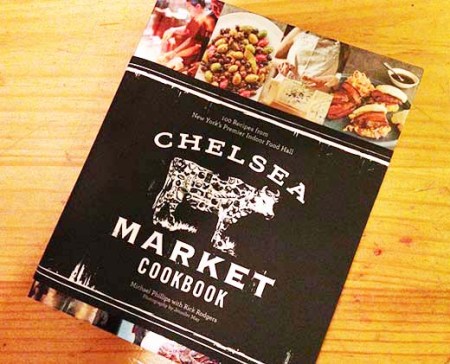
Soup is on and I’m psyched. Lately I just want to take care of everyone and there is no better way than a big soup. It’s also handy to fight the chills, sharpen immunity and transform refrigerator odds and ends into a delicious, shareable meal.
As it’s finally winter in my hometown, I can’t help but dream of a Gilligan’s Island, where it rains coconuts and fish sauce douses everything. I am not sure where that crew landed, but Southeast Asia, and its exceptional array of cuisine, is where my mind is going. All the fresh ingredients that grace the plate and techniques that conjure flavor and texture, make complex dishes of rather straightforward ingredients. Deeper studies reveal an endless tome of recipes, unique to each person cooking. Paradise in more ways than one.
In hopes of bridging my desire for exotic beach holidays and wintry wonderland realities, I spent some time cooking laksa, a coconut-based soup that is served over noodles, the result of a fusion between Chinese and Malay cooking. Laksa is also hearty with protein, vegetables and spices, it will ground an appetite with satisfaction and warmth, while the mind gets in a boat and sails.
In Malaysia, Singapore, Indonesia and Southern Thailand, laksa is wildly popular and comes in many varieties, sporting tofu, fish, poultry or beef intermingled with an endless parade of vegetables. I fill my quota with a couple of contrasty colors like orange, green, red, white, thanks to things like winter squash, green beans, tomatoes, parsnip, eggplant, or whatever seems logical. A simple homemade spice paste, with a healthy dose of curry and turmeric, sets the backdrop a golden yellow. A handful of bean sprouts adds crunch on top. Like many dishes from this part of the world, garnishes are key. Bright, aromatic lime, chilis, fresh herbs and extra fish sauce complete the dish, and the daydream.
LAKSA TOFU
Spice paste:
2 stalks lemongrass
1/2 cup roughly chopped shallots
4 cloves garlic
1/4 cup roasted macadamia nuts or almonds
1 teaspoon oil
1 teaspoon kosher saltSoup:
1/4 cup oil
2 cups cubed eggplant (1 inch cubes)
1 tablespoon curry powder
1/4 teaspoon turmeric
1 can coconut milk (14 ounces)
3 cups water
3 kaffir lime leaves
1 teaspoon sugar
1 tablespoon fish sauce
2 cups cubed butternut squash (1 inch cubes)
1 cup sliced napa cabbage
1/2 pound tofu, cut into 1 inch cubes
3 scallions, chopped
1 cup mung bean sprouts, plus extra for garnish
cilantro leaves for garnish (optional)
red chili slices for garnish (optional
kosher salt
1 lime, cut into wedgesyour favorite noodles, cooked
Remove the tough outside layer or two from the lemongrass stalk.Slice off the hard end (root end) and discard, along with the outer layers.
Make thin slices, starting at the root end, up the pale part of the stalk just until it starts to become deeper green. Reserve the green stalks.
Place chopped lemongrass in a small food processor (or blender) along with shallots, garlic, nuts, oil and salt. Puree the ingredients to form a paste-like consistency. Set aside.
Heat 1/4 cup of oil in a medium sized pot. Fry the cubes of eggplant with a generous pinch of salt until golden brown.
Remove eggplant with a slotted spoon and set aside on a paper towel-lined plate to drain.
In the same pot, fry the spice-paste until fragrant, about 5 minutes.
Stir in the curry and turmeric, and sauté for another minute or two before adding the coconut milk and water. Scrape the bottom of the pot to release any cooked bits that are clinging.
Toss in the kaffir leaves, sugar, fish sauce, a teaspoon of salt and squash. Bring to a boil and reduce the heat to a simmer.
Add the leftover lemongrass stalks, using them to stir the soup occasionally. Simmer until squash is almost cooked, about 8 minutes.
Add in the cabbage, tofu, scallions and sprouts along with the cooked eggplant. Simmer all together for another 5 minutes and taste for seasoning.
Add more salt, sugar or fish sauce as needed. Remove kaffir lime leaves before serving. Place a serving of noodles in each bowl. Ladle soup on top and garnish with fresh mung bean sprouts, cilantro leaves, lime wedges and/or chili slices.








